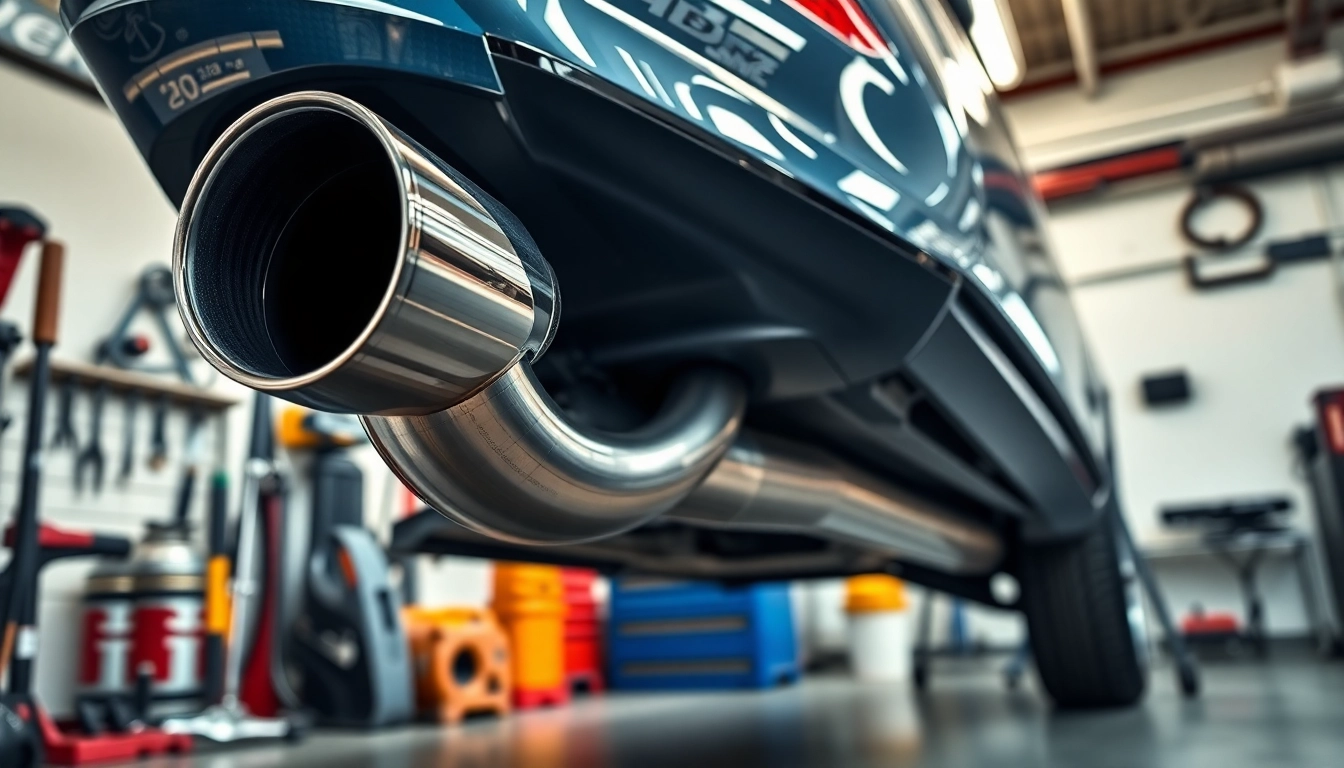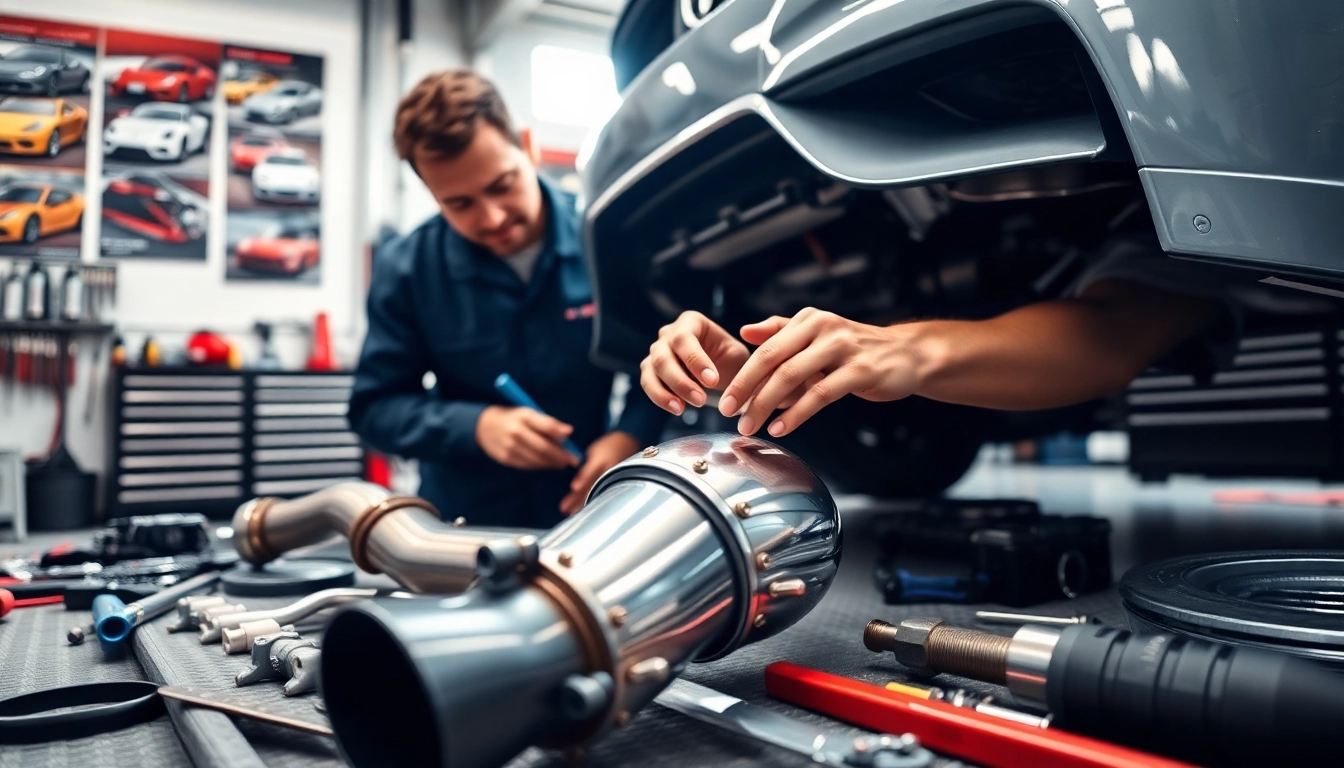Understanding the F80 Midpipe
What is an F80 Midpipe?
The f80 midpipe is a component of the exhaust system specifically designed for BMW F80 series vehicles, which include popular models like the M3. This section of the exhaust connects the exhaust manifold to the rear muffler, playing a crucial role in regulating exhaust flow and ensuring that the engine performs optimally. The f80 midpipe may also be referred to as a performance midpipe when customized or upgraded to improve exhaust flow and sound characteristics.
Key Features of the F80 Midpipe
The F80 midpipe boasts several key features that set it apart from the stock OEM options:
- Material Composition: Most aftermarket midpipes are constructed from high-grade stainless steel, which is known for its durability and resistance to corrosion. This material choice helps enhance the longevity and performance of the exhaust system.
- Design Variants: The f80 midpipe comes in various designs, including equal length and single midpipes, catering to different performance requirements and sound preferences.
- Increased Diameter: Upgraded midpipes often have a larger diameter compared to OEM parts. This allows for improved exhaust flow, resulting in better engine performance.
- Resonated vs. Non-Resonated Options: Many aftermarket midpipes offer resonated options that help to mitigate unwanted sound frequencies while enhancing the overall tone of the exhaust.
Benefits of Upgrading to an F80 Midpipe
Upgrading to an aftermarket f80 midpipe can significantly impact your vehicle’s performance and driving experience. The benefits include:
- Improved Performance: An aftermarket midpipe enhances the exhaust flow, resulting in increased horsepower and torque. This translates to a more responsive throttle and improved acceleration.
- Enhanced Sound Quality: Many enthusiasts upgrade the f80 midpipe to achieve a more aggressive and sporty exhaust note, transforming the driving experience.
- Weight Reduction: Aftermarket options can often be lighter than stock components, contributing to an improved power-to-weight ratio.
- Compatibility with Modifications: A new midpipe can improve compatibility with other performance upgrades, such as downpipes and cat-back exhaust systems, creating a cohesive exhaust setup.
Choosing the Right F80 Midpipe
Types of F80 Midpipes Available
When selecting an f80 midpipe, you’ll notice a variety of options available:
- Single Midpipe: This configuration replaces the OEM midpipe with a single pipe design, which provides a straightforward installation process and often increases exhaust flow.
- Equal Length Midpipe: Designed to provide equal exhaust flow from both sides of the engine, this option is popular among performance enthusiasts as it can enhance sound and performance.
- Resonated Midpipe: Features additional chambers to mellow the exhaust sound, reducing drone while still enhancing overall performance.
- Catless Midpipe: It deletes the catalytic converter for maximum flow, typically used in race applications where emissions are not a concern.
Factors to Consider When Selecting an F80 Midpipe
Before making a purchase, consider the following factors:
- Material Quality: Opt for a midpipe made from high-grade stainless steel for durability and resistance to rust.
- Fitment: Ensure that the midpipe is specifically designed for F80 models to avoid issues with installation and performance.
- Exhaust Sound: Audio preference plays a crucial role in selection. Listen to sound clips or reviews to find a midpipe that matches your desired exhaust tone.
- Legal Regulations: If emissions compliance is important, consider purchasing a resonated midpipe or one that includes catalytic converters.
Common Misconceptions About F80 Midpipes
Several misconceptions surround aftermarket f80 midpipes that are worth addressing:
- All Midpipes Are Loud: While some aftermarket midpipes do enhance sound, many are designed to balance performance and noise.
- Installation Requires Professional Help: Many enthusiasts successfully install the midpipe themselves with basic tools and guidance, though professional installation can ensure optimal results.
- Performance Gains are Minimal: Upgrading your midpipe can result in significant performance improvements, especially when combined with other modifications.
Installing Your F80 Midpipe
Preparation and Tools Needed for Installation
Installing an f80 midpipe can be a rewarding experience. Before you begin, gather the following tools:
- Ratchet and socket set
- Wrenches
- Jack and jack stands or ramps
- Safety goggles and gloves
- Exhaust hangers removal tool
- Penetrating oil (for stubborn bolts)
Step-by-Step Installation Process
Follow these general steps for a successful installation:
- Ensure Safety: Park the vehicle on a level surface, engage the parking brake, and allow the exhaust to cool down completely.
- Lift the Vehicle: Use a jack to lift the vehicle and secure it with jack stands or drive it onto ramps.
- Remove the OEM Midpipe: Use penetrating oil on exhaust bolts, then unfasten and remove the OEM midpipe. Carefully detach any exhaust hangers.
- Install the New Midpipe: Position the new midpipe in place and secure it with the original bolts and hangers.
- Check for Leaks: Start the vehicle and listen for leaks. If any are detected, re-torque the connections.
- Lower the Vehicle: Once satisfied with the installation and sound, lower the vehicle safely.
Common Installation Challenges and Solutions
While installation is often straightforward, you may encounter challenges such as:
- Stuck Bolts: If bolts are rusted or difficult to remove, applying penetrating oil and using heat can help loosen them.
- Improper Fitment: Always check that the midpipe is designed for your specific model to avoid fitment issues.
- Exhaust Hanger Issues: If hangers are hard to reach, using an exhaust hanger tool can make the job easier.
Performance Enhancements with the F80 Midpipe
Impact on Engine Performance and Sound
The f80 midpipe has a direct influence on engine performance and the overall sound of your vehicle:
- Enhanced Power: By reducing back pressure, an aftermarket midpipe facilitates better exhaust flow, leading to increased horsepower and torque.
- Sound Profile: The change in the midpipe configuration directly affects the sound produced by the exhaust system. Enthusiasts often describe the sound as more aggressive and throaty compared to the OEM setup.
Performance Metrics to Monitor After Installation
After installing the f80 midpipe, these metrics can help gauge performance improvements:
- Horsepower and Torque Gains: Use a dynamometer to quantify performance gains, often noted after an ECU tune.
- Throttle Response: Noticeable improvements in how quickly the engine responds to the accelerator pedal are indicative of better exhaust flow.
- Fuel Efficiency: In some cases, improved exhaust flow may lead to slightly better fuel economy. Monitor this metric post-installation.
Real-Life User Experiences with the F80 Midpipe
Many enthusiasts have reported notable improvements after upgrading their f80 midpipe. Common experiences include:
- Increased driving enjoyment due to a more engaging engine note.
- Enhanced desirability of the vehicle, especially among the performance-tuning community.
- Positive feedback regarding ease of installation and noticeable performance improvements.
Maintenance Tips for Your F80 Midpipe
Regular Maintenance Practices to Follow
To ensure the longevity and performance of your f80 midpipe, follow these maintenance practices:
- Regular Inspections: Routinely check for visible cracks, rust, or corrosion.
- Check Exhaust Hangers: Regularly inspect hangers for wear and replace them if they show signs of damage.
- Cleanliness: Keeping the midpipe clean can help prevent rust and improve its overall performance.
Signs That Your F80 Midpipe Needs Attention
Be alert for signs that indicate your midpipe may need repair or replacement:
- Pinging or Rattling Noises: Unusual noises can signify loose components or damage.
- Increased Exhaust Odor: A harsh or noticeable exhaust smell may point to leaks.
- Performance Decrease: A drop in horsepower or acceleration can indicate exhaust flow issues.
Long-Term Care and Upkeep Strategies
For long-term care of your f80 midpipe:
- Consider Coating: Apply a high-temperature ceramic coating to reduce thermal stress and enhance resistance to corrosion.
- Professional Inspections: Engage a mechanic to conduct periodic checks for exhaust leaks or component wear.



